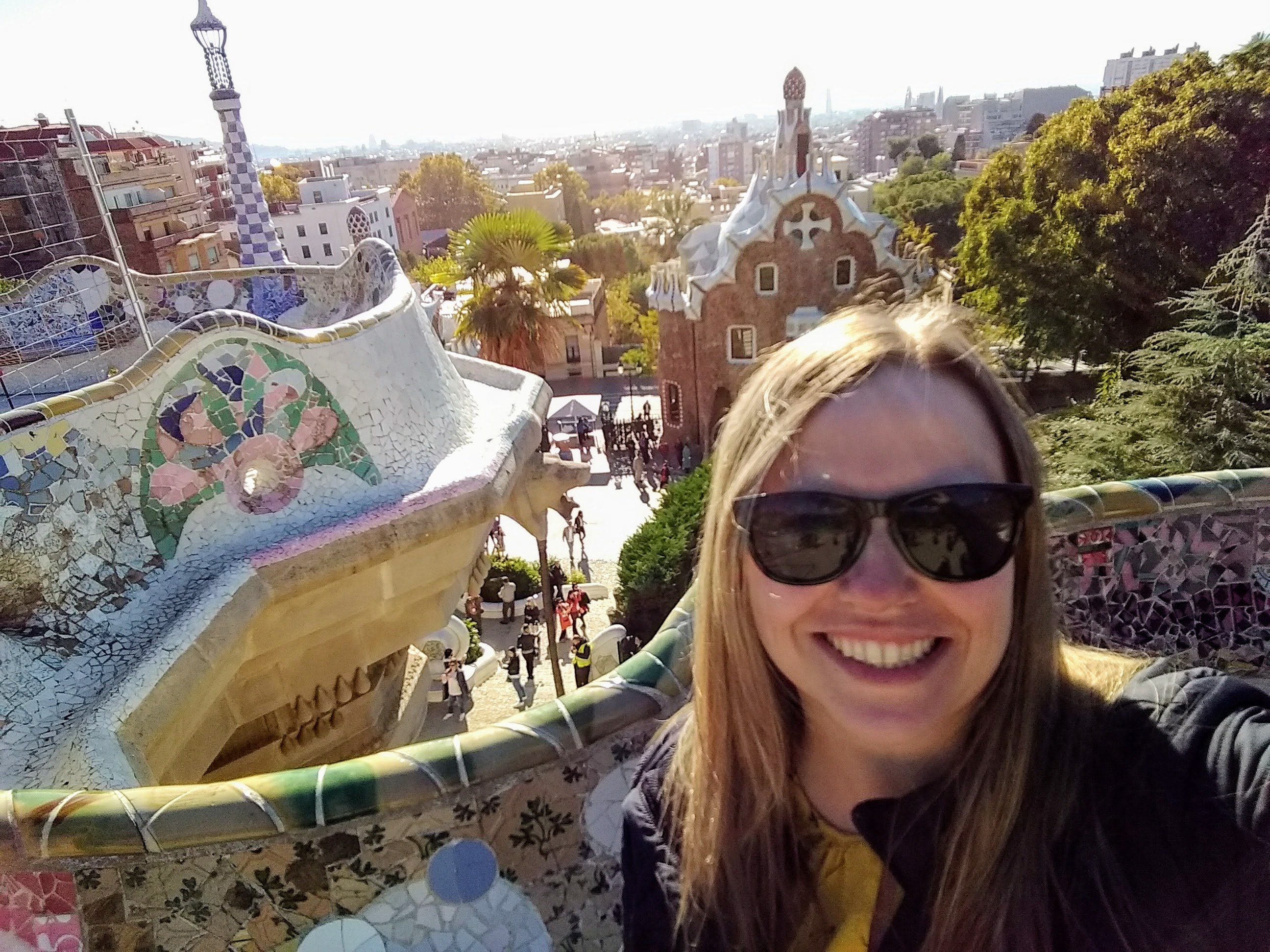Location: Barcelona, Spain
Antoni Gaudi is a genius.
Born in 1852, Gaudi dedicated his life to his craft, an architectural style known as Catalan Modernism. Gaudí’s work was influenced by his passions in life: architecture, nature, and religion. He considered every detail of his creations and integrated into his architecture such crafts as ceramics, stained glass, wrought ironwork forging and carpentry. He also introduced new techniques in the treatment of materials, such as trencadís which used waste ceramic pieces.
Barcelona is the home of the bulk of his work, boasting 20 sites opened to visitors, including private homes, parks and public buildings.
I spent many days exploring as many sites as I could squeee in (9!!) and marvelling in the wonder that is Antoni Gaudi.
*fair warning: this is a long post. I really, really, really love Gaudi.*
Casa Batlló
Known locally as Casa dels ossos (House of Bones – due to its skeletal look; seriously, look at those balconies!), this private residence was remodeled by Gaudi in 1904.

The Spanish architect’s famous trencadis (broken tiles) adorns the facade of the building, a colorful backsplash for the striking form.
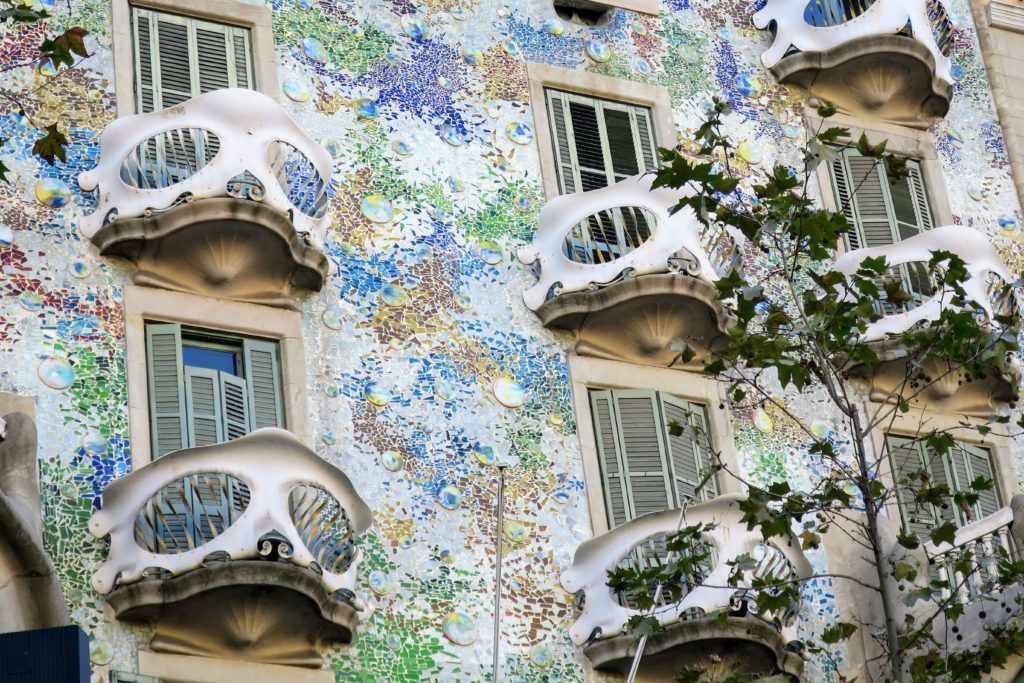
The roof of the building is only one of the unique features: its shape resembles a dragon, the arching slopes mimicking the curves of the back. And the rounded turret with the cross? The popular theory is that it represents the lance of Saint George, who happens to be the patron saint of Catalonia, which has been plunged into the back of the dragon.

The interior has very few straight lines, its curves and swirls mimicking forms found in nature.
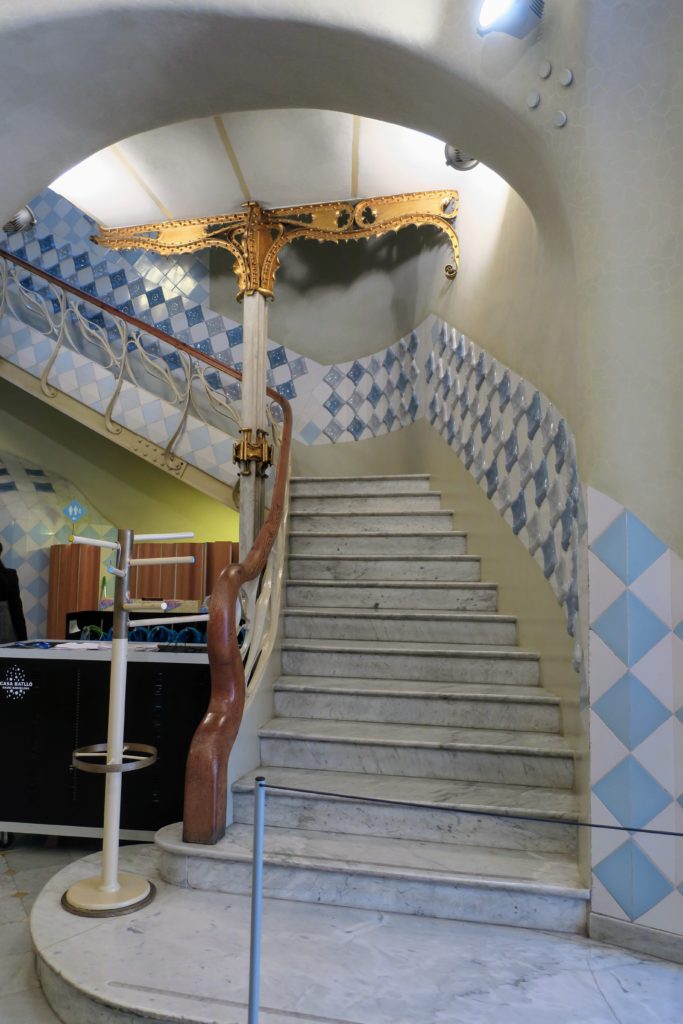



The central atrium is one of the most attention grabbing elements in the house.
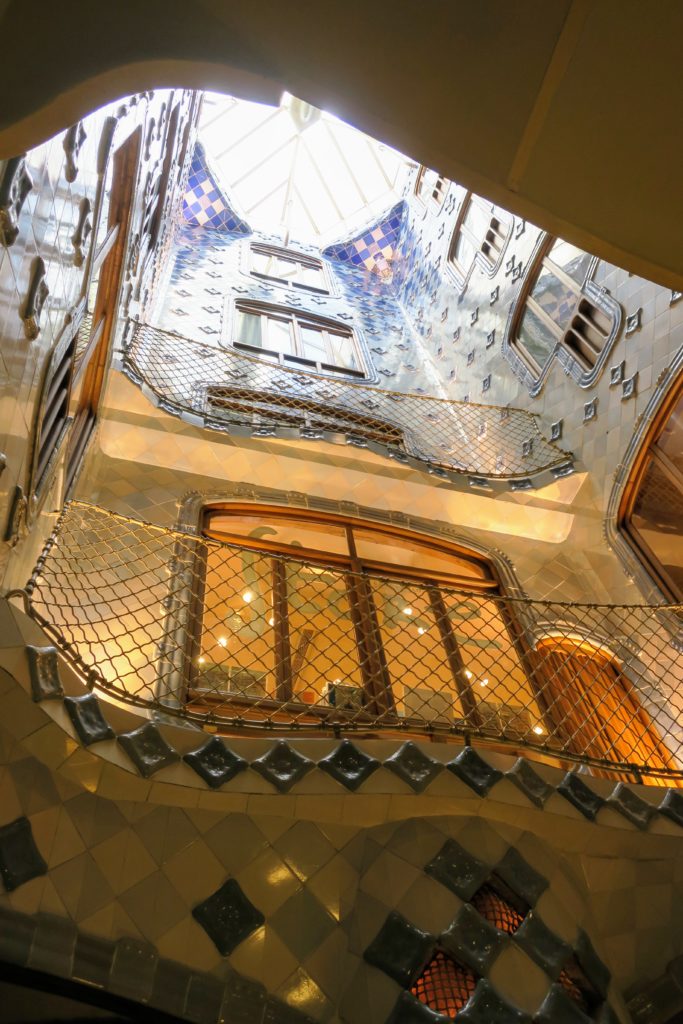
It’s ombré blue tile work is definetly worthy of the ‘gram…..(I love this photo so much, it’s framed in my house!)
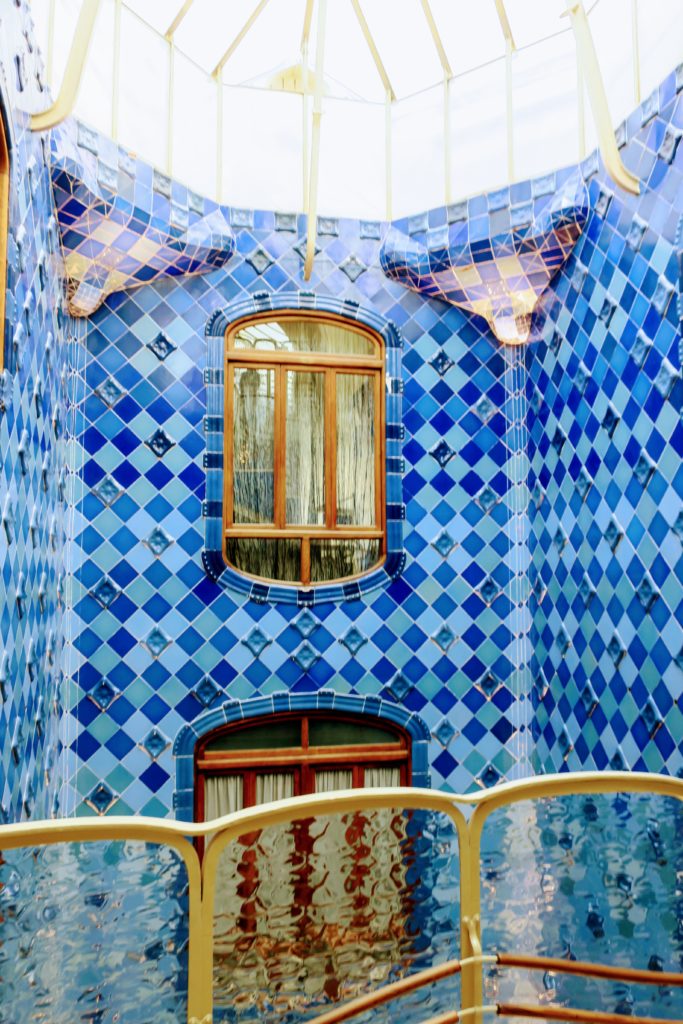
Casa Milà
La Pedrera (as Casa Milà is known) was considered one of Gaudi’s more contreversial works, as it did not respect any rules of conventional style. It was the last private residence he designed, between 1906 and 1912.
Gaudí was a fierce Catholic and planned for Casa Milà to be a symbol of spiritualitym however the city had other thoughts: in the end, they refused to allow him to install the religious statues he intended on the roof.
Fun fact: I’m an avid reader and historical fiction is one of my favourites. Shortly before arriving in Barcelona, I had just completed Dan Brown’s novel, Origin, in which a large part of the story involves, you guessed it, Casa Milà!



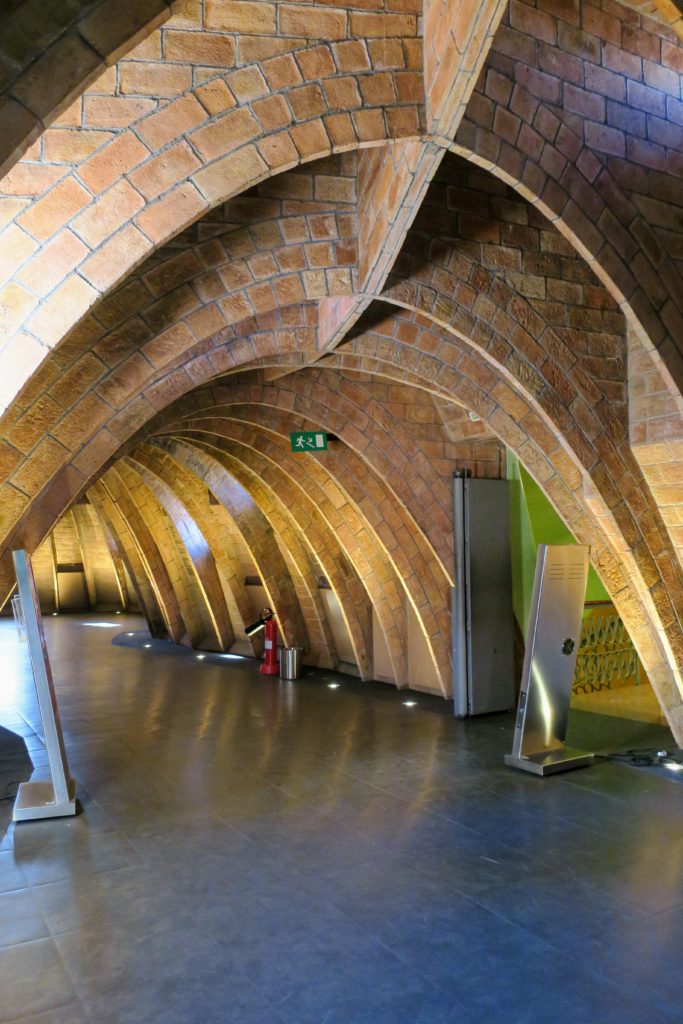

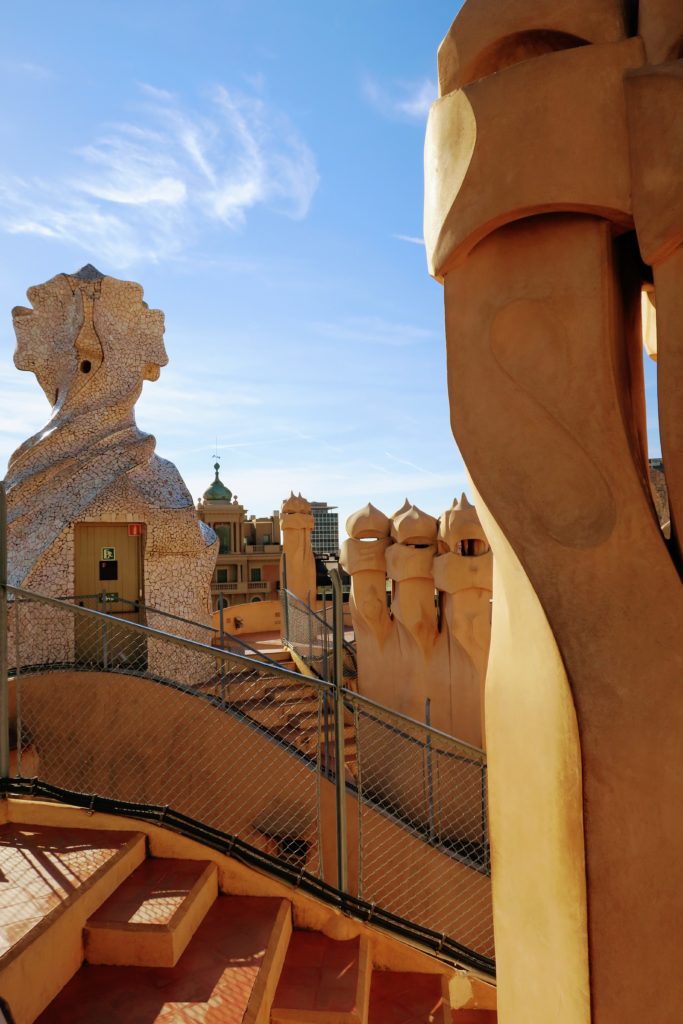
Gaudi was clever: this archway on the roof perfectly frames the view of his greatest work: La Sagrada Familia!

Casa Vincens
The discovery of this house, the very first house that Antoni Gaudi designed was a rare treat: since it’s construction in 1885, Casa Vincens has been a private residence and closed to the public. However, on November 16th 2017, it opened to the public for the first time. I got to visit on November 17th (I figured I would give them a day to work out the kinks!).

This is, by far, one of Gaudi’s more, ugh, interesting designs.
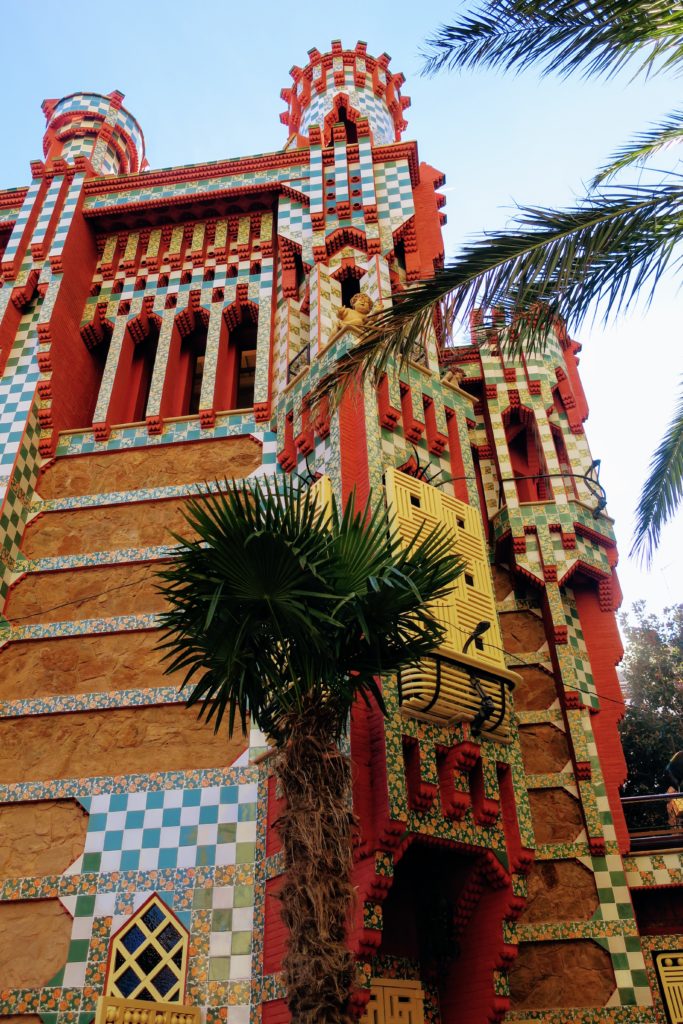
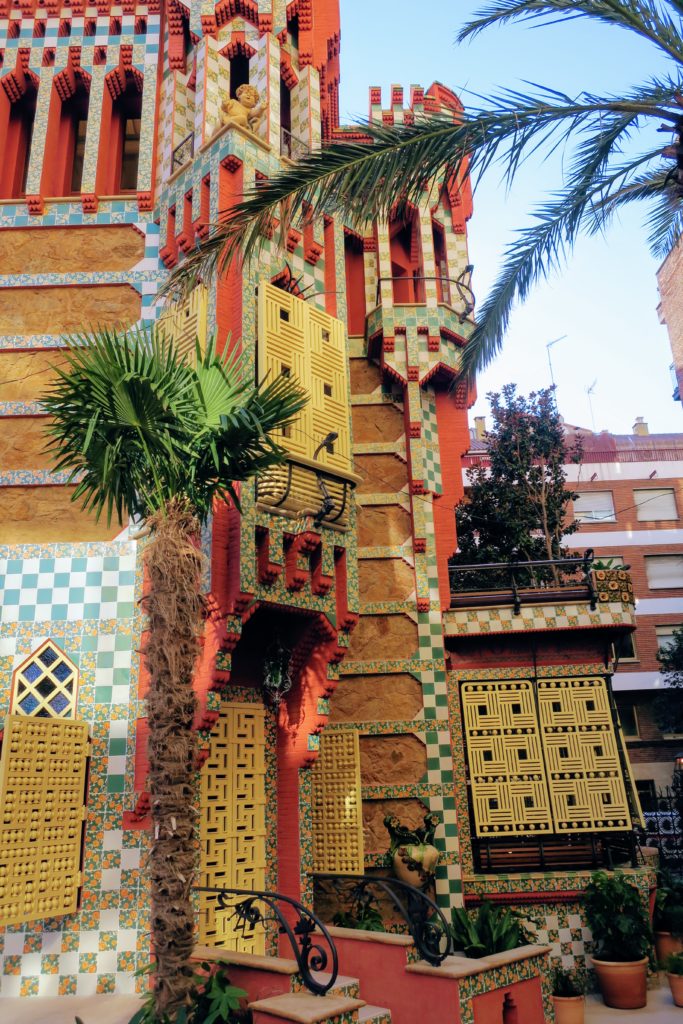
The cast iron fence was directly inspired by nature: real palm leaves were used to cast the pattern!
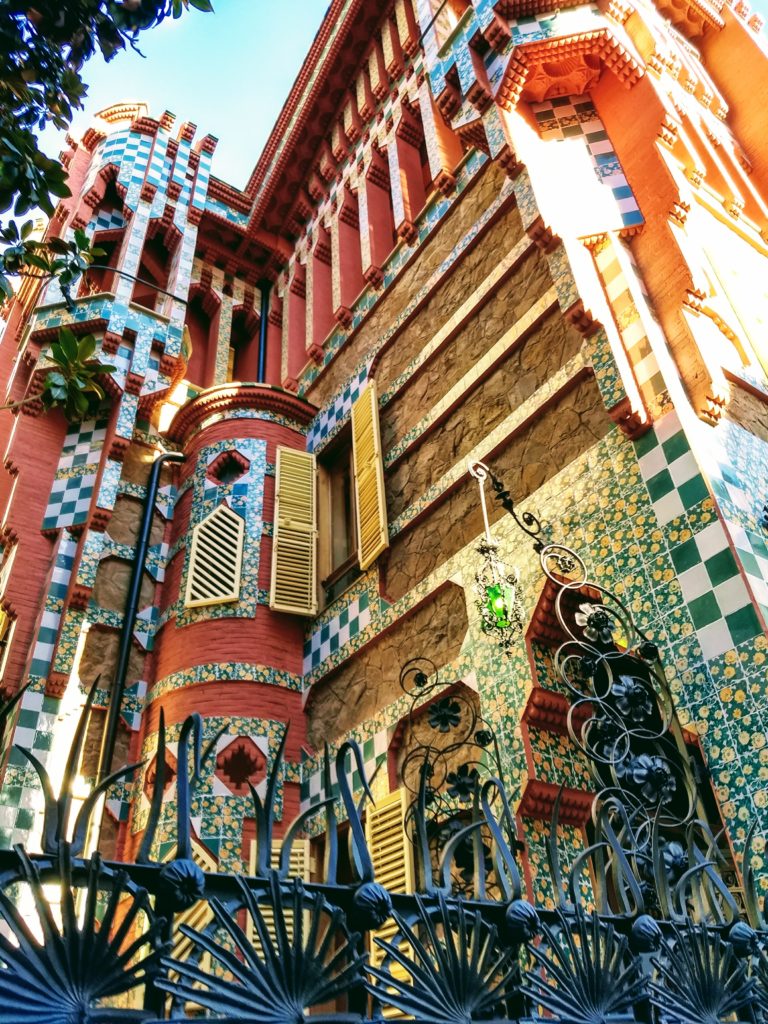
The design is heavily influenced by nature.
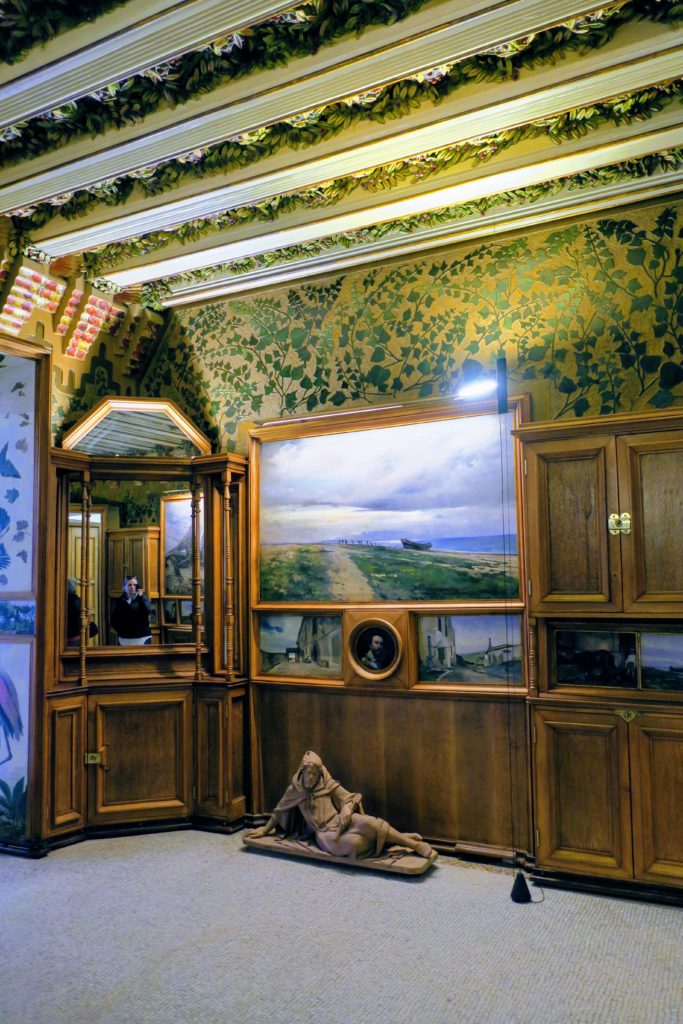
The ceilings are intricately decorated with paper maché motifs of roses, leaves and fruits.
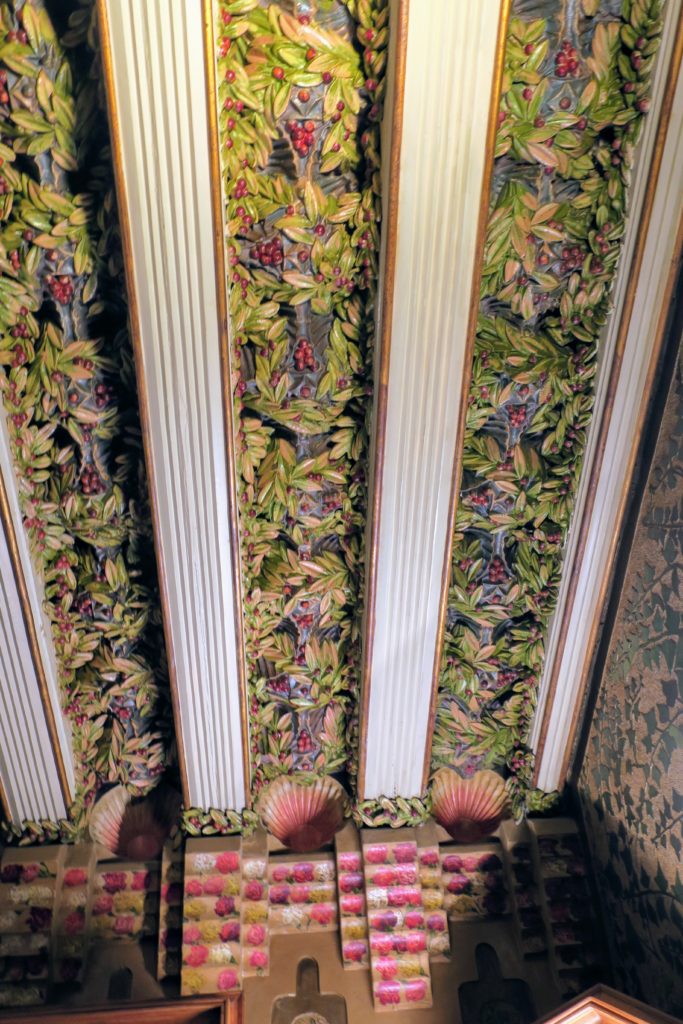
The room below, believe it or not, is the smoking room. The design of the roof is specifically engineered to push the smoke upwards, towards the hidden vent. Clever and pretty!
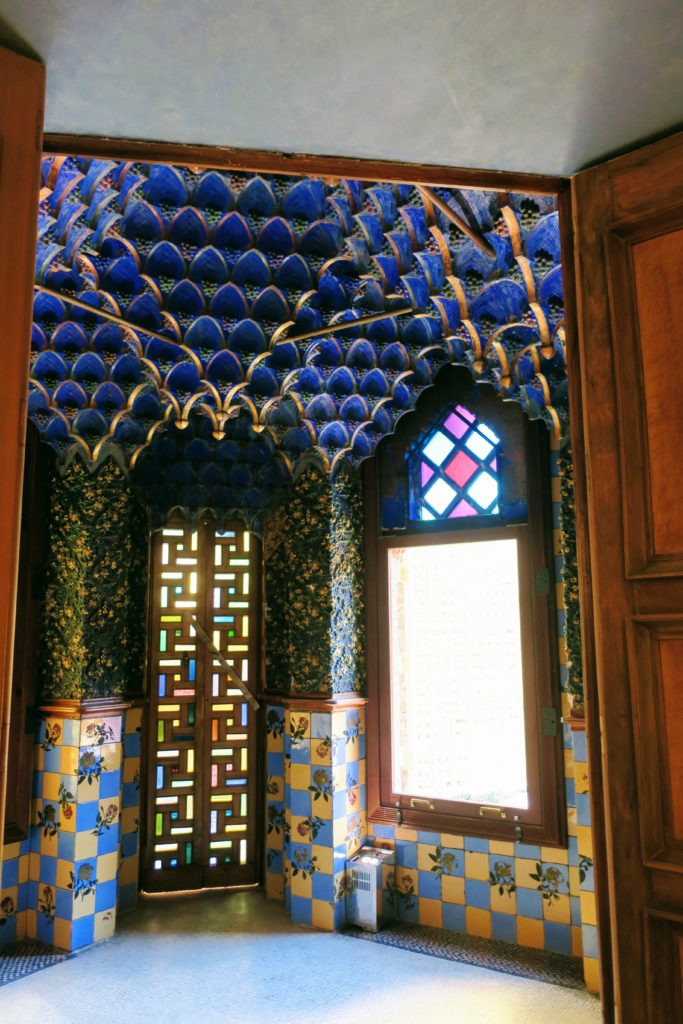
Park Güell
The park was built from 1900 to 1914 and was officially opened as a public park in 1926. In 1984, UNESCO declared the park a World Heritage Site under “Works of Antoni Gaudí”. (Wikipedia)

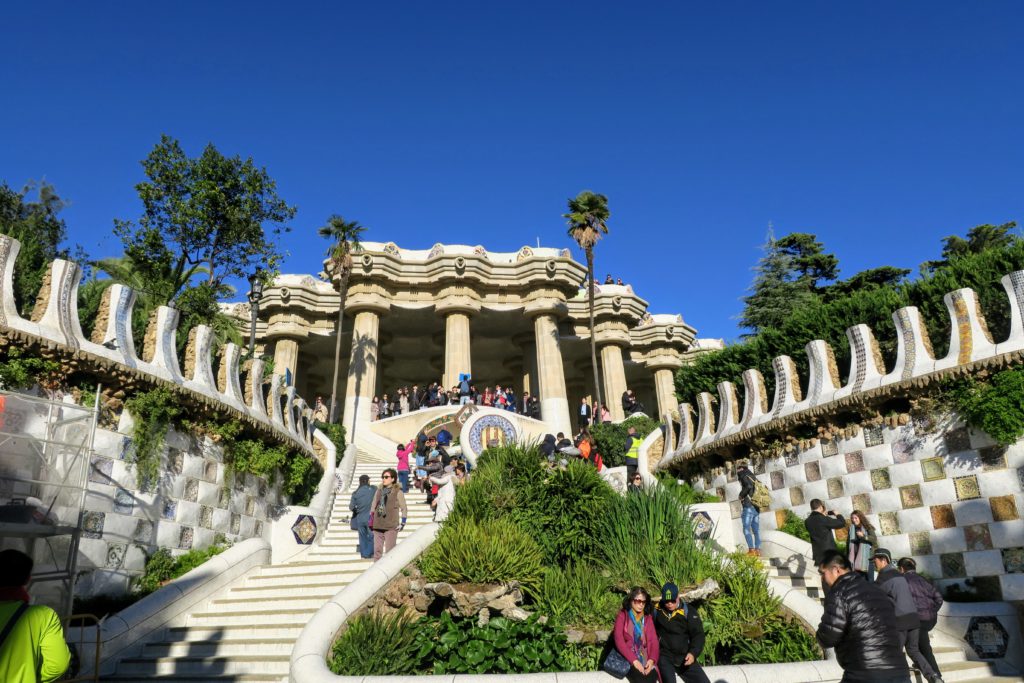
The ‘sea serpent’ bench is one of the focal points of the park and my personal favorite! The ‘s’ shape of the long, trencadis decorated bench provides secluded refuges, rip for private conversations amidst a crowded space.

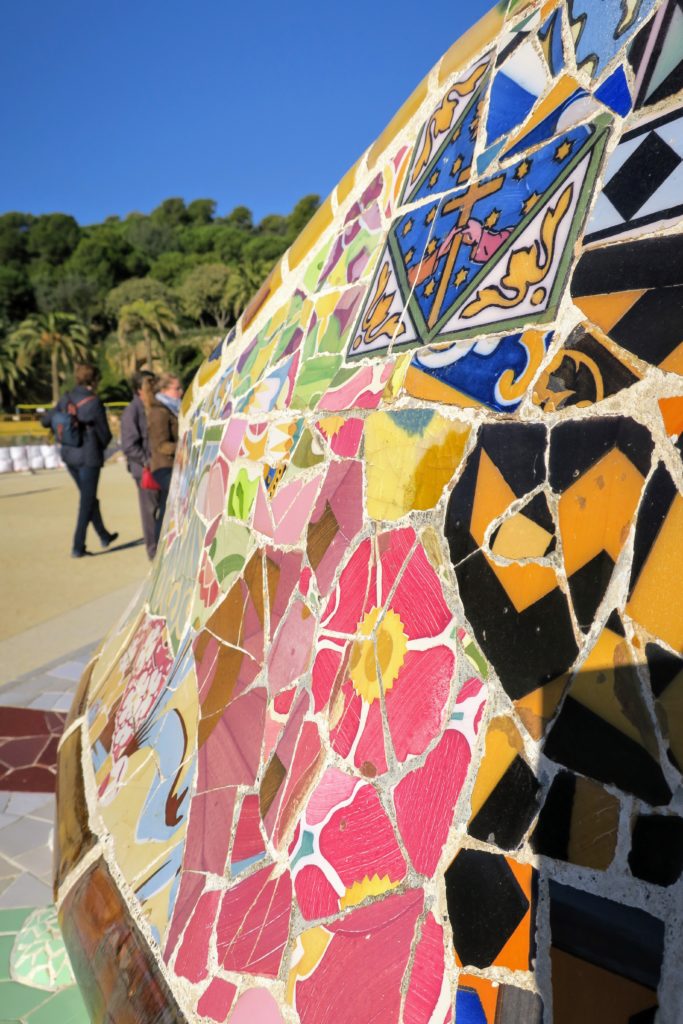
Like waves rolling onto the shore, these sloping columns form a retaining and loadbearing wall under the roadway above.
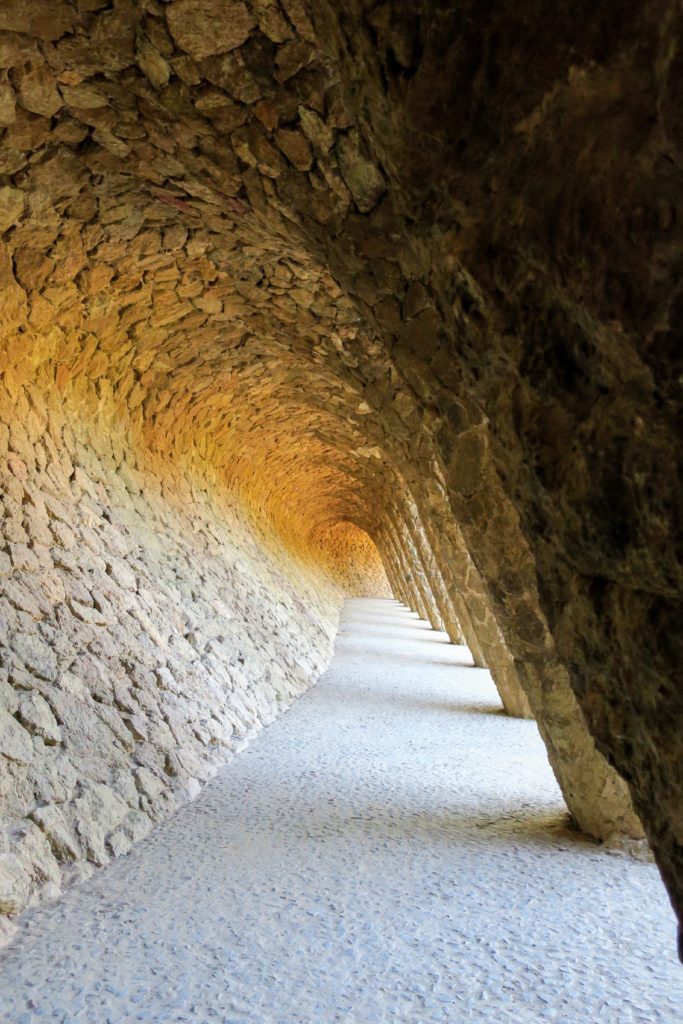
El drac is the park’s most famous resident, a colorful mosaic salamander that attracts line ups of visitors, waiting for their turn at a photo op.

Finally, it was my turn!

The Basílica de la Sagrada Família
What can one say about this masterpiece? A work better experienced than explained, my words will surely fail to impress upon you the sheer awesomeness of what is without arguement Antoni Gaudi’s greatest work, his life’s achievement.
What is equally impressive, is that the Basílica de la Sagrada Família is an unfinished catholic church. Construction started in 1882 and, after the original architect was let go, Gaudi become involed in 1883. He transformed the project with his architectural and engineering style, combining Gothic and Art Nouveau forms. Gaudí devoted the remainder of his life to the project, and he is buried in the crypt. At the time of his death in 1926, less than a quarter of the project was complete. The project relays solely on private donations and has undergone many complications and set backs, the most serious was a fire set by Spanish revolutionaries during the Civil War. T.e resulting loss of plans and models caused a 16 year halt to the project while attempts were made to piece together fragements of the original plaster model. The project is anticipated to be complete in 2026, the centenary of Gaudi’s death.
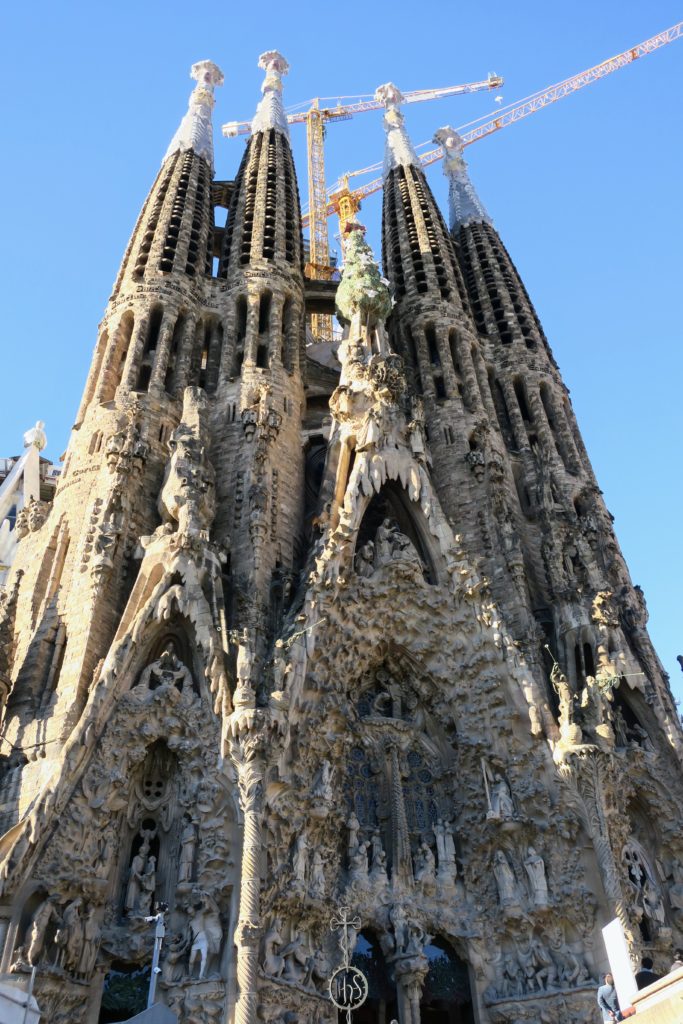
The Church will have three grand façades: the Nativity façade to the East, the Passion façade to the West, and the Glory façade to the South (yet to be completed).
The Nativity Façade was built before work was interrupted in 1935 and bears the most direct Gaudí influence – he personally carved many of the figures.
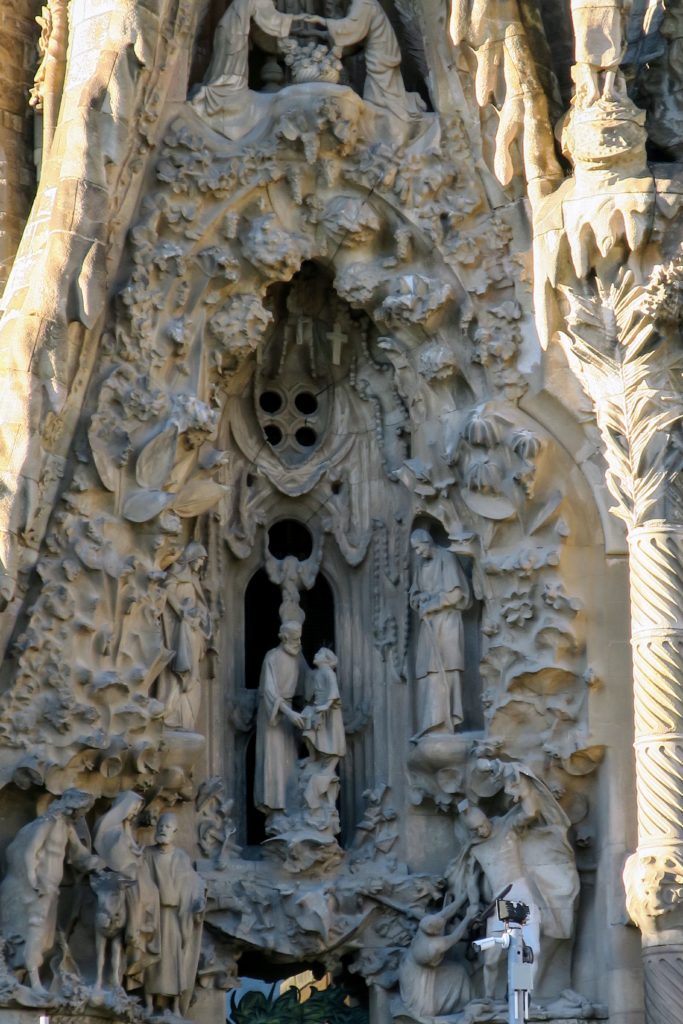
There is no doubt that this is one of the most unique Catholic churches in the world. From a distance, the Nativity facade appears to be made directly out of the earth, the story carved in mud.

I’ll admit that on first glance, I wasn’t sold. I thought it was odd. By that point in my travels, I had seen so many grand churches that I was equating gold and glitter with beauty and found the Sagrada Familia, well, difficult. However, I accidently joined a tour of the church which helped me better understand Gaudi’s design and appreciate him as a true visionnary! The attential to detail is remarkable, and the beauty truly lies in it’s simplicity.

Sadly, the artist / architect himself was never able to see the bilk of his work realized – he died on June 10th 1926. Over the years, Gaudi’s personal appearance had undergone a radical change: in his youth, he dressed in ‘dandy’ suits and was well groomed, however, as he aged, he neglected his appearance to the extent that sometimes he was taken for a beggar. Sadly, this contributed to his death: on the morning of June 7th, as he was taking his usual morning walk, Gaudi was struck by a tram. Passers-by assumed him to be a beggar because of his lack of identity documents and shabby clothing, and thus did not receive aid for quite some time. Finally, someone transported him to the hospital where he only received minimal care. By the time he was recognized, by the chaplain of the Sagrada Familia church, he was was too far gone to benefit from additional interventions and subsequently died the next day on June 10th. He was buried in the crypt of the church that he spent 43 years bringing to life.

On the opposite side of the building, the Passion façade was built according to the design that Gaudi created in 1917 however construction only began in 1954, well after his death. It is a stark contrast to the Nativity facade, with its sparse, bare stone and geometric, gaunt figures. The entire facade, as a whole, has an eerie, skeletal look to it.
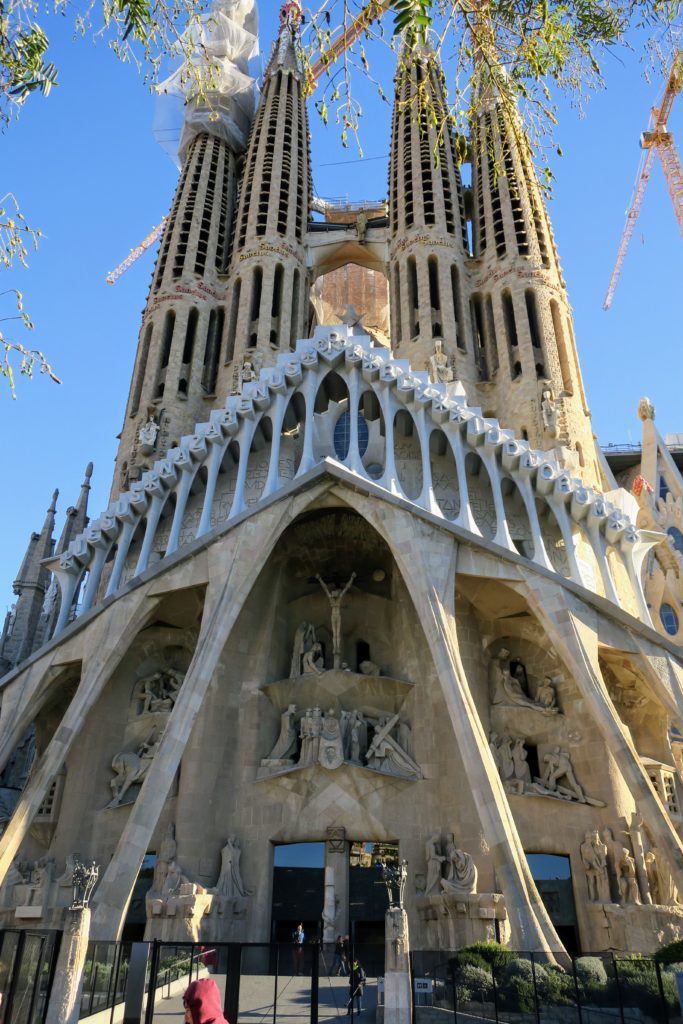
The sculpture on the right is my favourite, for its brilliant simplicity. An important part of the Passion of Christ is the soldier piercing Jesus’ side with a lance; here, Gaudi illustrated this by having the soldiers lance pierce the stone, as if the entire church itself was Christ. Also, if the lance was extended by several feet, it would indeed line up almost perfectly with Jesus’ right side, the side that is most often depicted in art as having been pierced. Briliant.
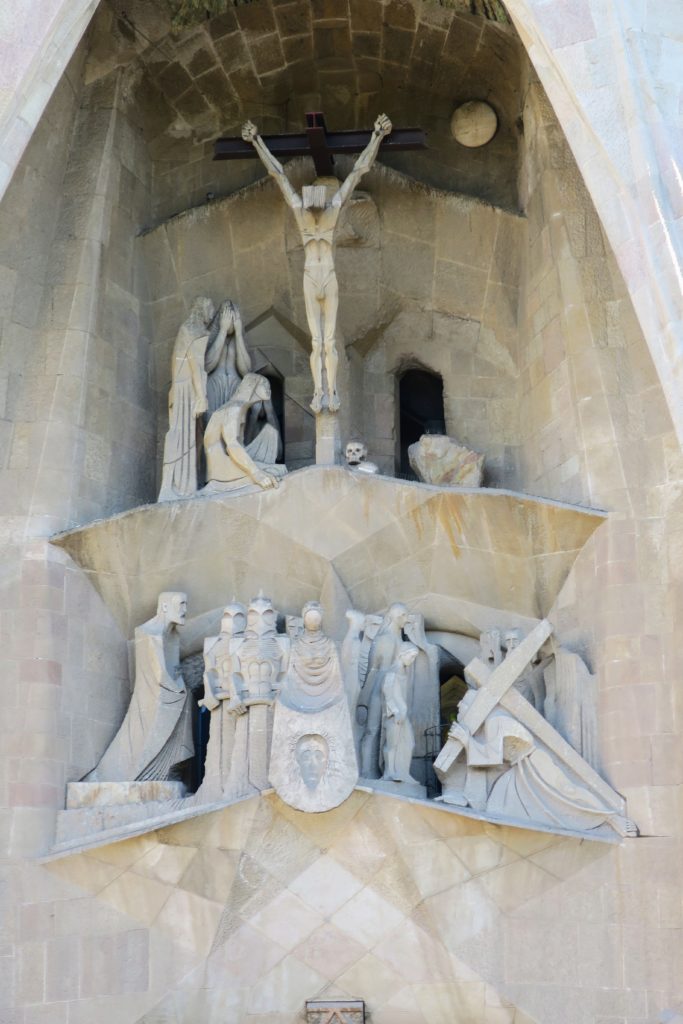
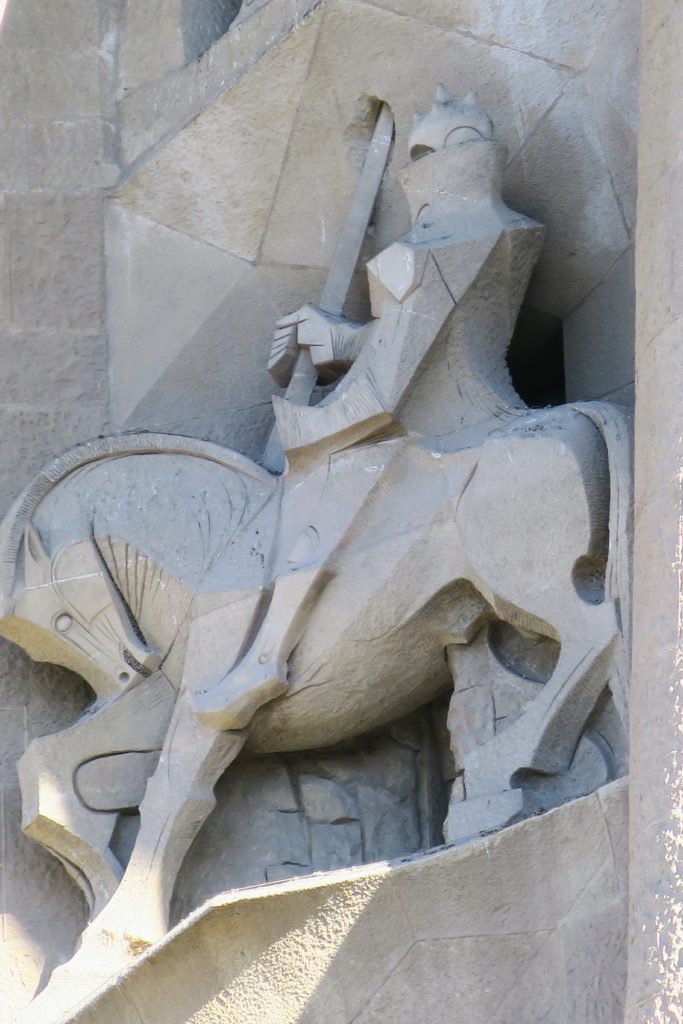
There was a lot of controversy over this facade, as the figures were a stark contrast to Gaudi’s typical style: for a man who eschewed the use of straight lines, the choice of geometrical figures depiting the passion was bewildering. Many felt that this was not Gaudi’s design, that the achitect of the era had taken too many liberties. However, the facade is indeed based on Gaudi’s original design, its just not his creation.
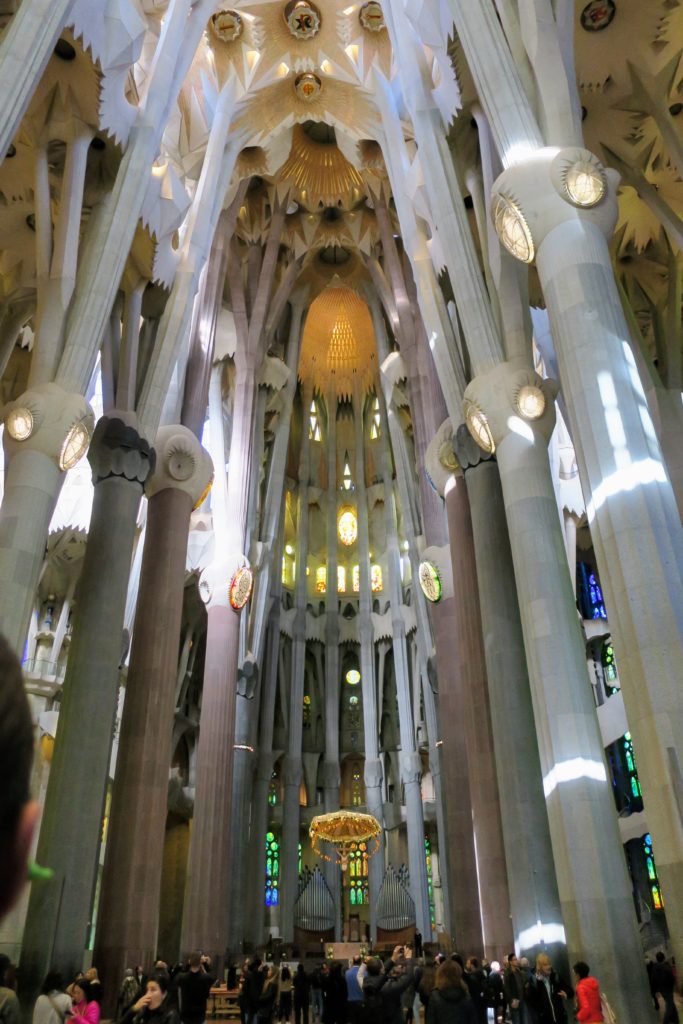
The interior of the church is just as striking – which is saying a lot. The intented design was to mimick a forest – it’s safe to say that Gaudi was successful in that endeavour. Massive columns dominiate the aisle, however their design is even more fascinating than their effect.
The double twist columns must be understood from the standpoint of Gaudí’s desire to constantly push the envelope. The base of the columns are star shaped however as they rise, the turn, creating the appearance of movement, finishing in the shape of a circle. Sounds simple however this is a brilliant feet of engineering!
For Gaudí, meaning and form are inseparable. By drawing a star on the ground (the shape of the base of the column) and moving it in helicoidally upwards, it is clearly connecting the earth and the heavens. (for more info, check out my source: Blog Sagrada Familia)

The windows are a focal point of the construction, with some stretching more than two stories high. They are designed to draw the eye upwards and aim to create a space for reflection and quiet introspection.

The windows higher up are the most transparent, to ensure the maximum amount of unobstructed light to filter through; those at the bottom are more adorned and filters, as less light reaches those areas. When the sun is high, the light that streams in bathes the church in a sea of shimmering colors.
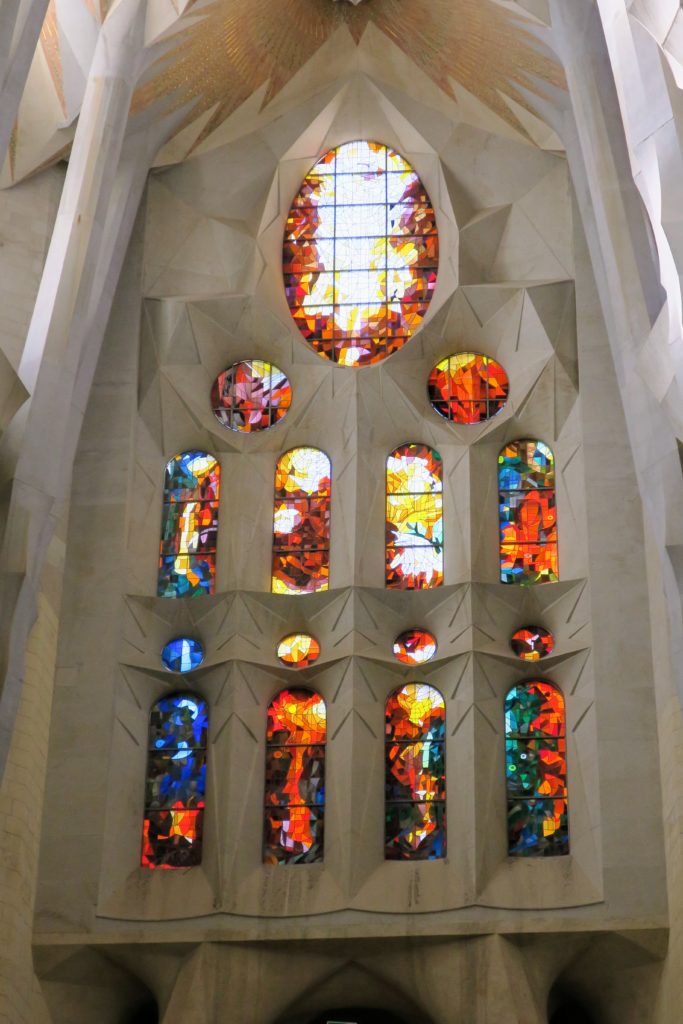
Prior to my visit, I had very low expectations for the Basilica de la Sagrada Familia. I thought it would be another historical site made ultra famous purely by the novelty of tourism, much like Da Vinci’s Mona Lisa. Also, what type of church was this anyway? Was it really that impressive? The answer, yes. Yes it was. And more! I was blown away by the sheer magnitude of the building, taken in utterly by the absolutely creative and well imagined design, not to mention left in awe over the architectural brilliance of Antoni Gaudi.
Indeed, this is a church that is better experienced than explained.
